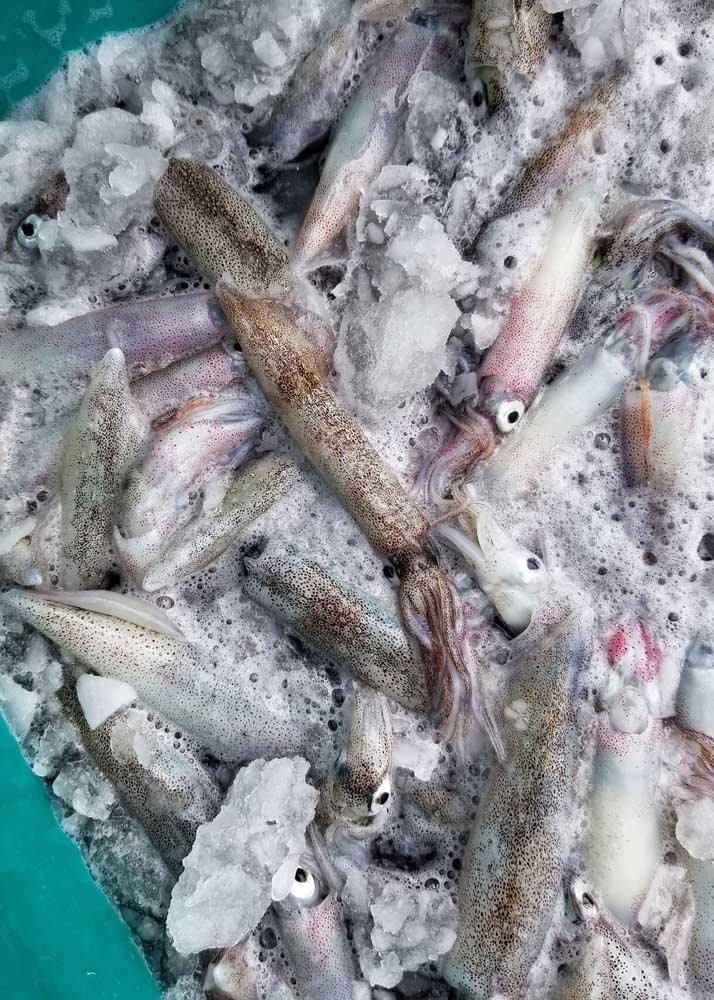Squid moving north as ocean warms
Published 8:21 am Thursday, February 3, 2022

- Researchers have tracked the increase in market squid off Oregon and Washington state.
PACIFIC OCEAN — New research has found California market squid populations increased 39-fold off the Washington coast and 25-fold in Oregon waters in recent years.
Trending
It is a population boom and an expansion north tied to several years of warmer-than-normal ocean temperatures — a glimpse of the possible future as the ocean warms and more of marine heat waves known as “blobs” occur.
The expansion to the north has been enough to generate a significant commercial fishery in Oregon waters — 10 million pounds in 2021 and nearly $6 million in revenue in 2020 — in which some Washington boats participate. In Washington, even though there are many more squid than before, their density still hasn’t generated commercial interest.
Mary Hunsicker, the co-author of the study and a research ecologist with NOAA Fisheries, said “With this study, it was the first time we were able to see how the squid would respond during extreme warming events, like the marine heat wave. We know with climate change and warming temperatures coupled with increasing variability in the climate patterns, we’re going to see more of these extreme events.”
Trending
Hunsicker and her fellow researchers used survey data that the National Oceanic and Atmospheric Administration collects every year from designated spots off the West Coast. The surveys are independent from fisheries and do not target squid, but squid kept showing up.
While researchers saw major increases in the squid population in the north, they did not see the same level of increase in California, the squid’s more traditional home. Market squid is a cornerstone of California’s commercial fishing industry, both in value and in pounds landed.
For Oregon fishery managers, the new study is a useful sort of ground-truthing, confirming what they had started to see in commercial fishing landings in 2016.
To Hunsicker, the new research provides “a clear example of how changing climate and ocean conditions are impacting marine resources and fishing communities.”
Data gaps
There are limits to what the data collected through NOAA’s surveys can say about the squid, cautioned Brandon Chasco, lead author of the new study on market squid (Doryteuthis opalescens) and a quantitative ecologist with NOAA.
“The area we are looking at is just a sample of the squid distribution and it’s not even where the bulk of the squid population is,” he noted.
They are only sampling one or two times a year, as well.
“We’re capturing one part of their life history,” Chasco said.
Much of the fishing of market squid occurs in nearshore state waters and states manage that activity, but NOAA does have a broader role to play in ecosystem management.
Important prey
Market squid are an important part of the marine food web — numerous types of animals eat them, including seals, sea lions, Chinook salmon, shark and cormorants. In addition to also being eaten by people, the squid are often used to bait commercial Dungeness crab pots.
Since the squid feed off smaller organisms, they are an important way for energy to move up through the food chain. Adults can reach up to 12 inches long but they only live up to about a year, and reproduce quickly.
“Just knowing that a forage species that is important to the ecosystem appears to be responding to these large, environmental drivers — that’s important to planning,” Chasco said.
Fishery managers implemented new regulations last year to address the growing local fishery, including weekend closures to try to space out fishing activity on squid spawning grounds.
They will be addressing other concerns and possible future action at an Oregon Fish and Wildlife Commission in February. There are still some critical information gaps when it comes to market squid and questions about what a dedicated commercial fishery in Oregon could mean for the animals overall.
Cold water right now
But with colder waters now off the Northwest coast, it isn’t clear what will happen next for the emerging fishery this year. There is no set season for squid, but landings seem to occur more often in the warmer months. No squid have been landed so far in 2022, according to Oregon fishery managers.
Greg Krutzikowsky, with the Oregon Department of Fish and Wildlife, noted that the West Coast is back in a La Niña year, referring to the oceanic and atmospheric phenomenon that is part of a broader climate pattern and brings cooler conditions.
“It will be interesting to see if there’s as much of the resource available for landings off of our coast,” Krutzikowsky said. “But things change and things move around and sometimes we’re surprised by how things go.”
He thinks fishermen will still try for market squid. How much they’ll end up catching is anyone’s guess.
Squid in Washington
There is a question about how many more market squid in Washington’s ocean waters could affect the existing ecosystem.
“The question is, how does that balance out?” Caitlin Akselrud, an expert on California fisheries and a doctoral candidate at the University of Washington’s School of Aquatic and Fishery Sciences, told the Seattle Times. “I personally don’t know the answer to that question.”
Barely anybody is engaged commercially in market squid in Washington, according to Lorna Wargo of the Washington Department of Fish and Wildlife.
“A fishery just hasn’t developed, even though there’s indication that squid abundance has increased,” Wargo told the Times.









